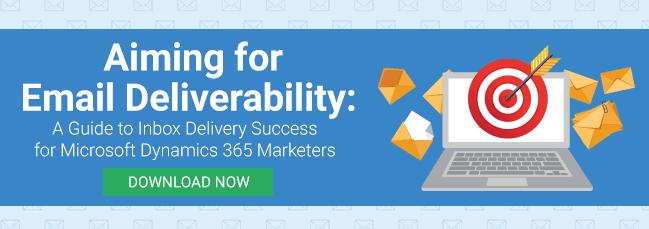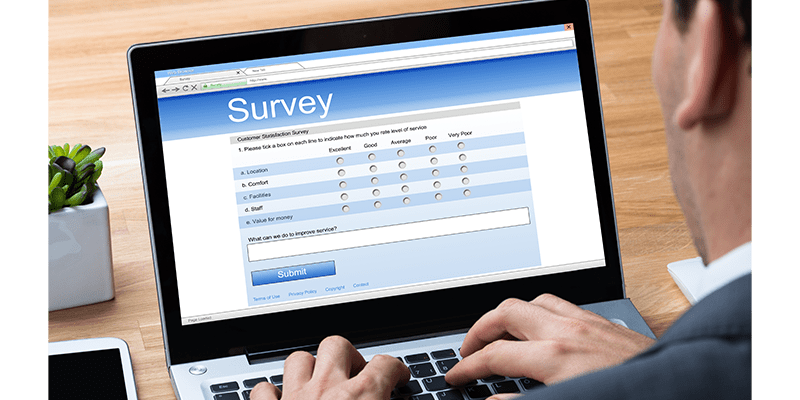Marketing
6 Considerations When Sending Follow-Up Emails to Unresponsive Prospects
by clickdimensions

No matter the type of emails you are sending, you have no doubt had your fair share of unresponsive recipients. It makes sense to send follow-up emails in these situations to rekindle communications but sending the wrong content in the follow-up can sometimes cause more harm than good. Here are six principles to adhere to when sending a follow-up email to a prospect after no response. Follow them, and you’re more likely to welcome a few of those prodigal prospects back into your open arms.
1. Be direct: include a close or call to action. Initial follow-up emails are often softened with phrases like, “I’d love to hear back from you” or “I’d like to learn more about what you do.” The problem with this approach is that these kinds of phrases aren’t questions; they aren’t asking for a close. Closing isn’t just the high-level goal of your efforts, like getting a contract signed. Every communication with a prospect should include a close, regardless of how minor, to help move toward that goal. Whether you’re closing for another five minutes of their time, a demo or a discovery call, you should have a purpose and call to action every time you reach out.
So, instead of an ambiguous statement like, “I think I can really help you. I hope we can catch up soon,” be direct and give the prospect an actionable request to reply to, like, “Are you free for a demo this Friday?”
2. Quit repeating yourself. Never send the exact same email content for your follow-up email. Doing so may save a bit of time, but from the recipient’s perspective, it either makes you look lazy or comes across as an effort to make them feel guilty for not responding to the first email. From a deliverability perspective, resending identical content can also make the email more likely to be treated as spam.
Try new subject lines, preheaders and calls to action. You never know what might be the thing that gives your prospect the extra encouragement to respond.
3. Pump the brakes a bit. Everybody has a different schedule and different responsibilities. If you didn’t receive a response immediately, it doesn’t mean that your prospect missed the first email; they may not have had an opportunity to reply yet.
Being overly persistent or trigger happy on sending out follow-up emails won’t likely garner favor with your prospects. If you’re only waiting a day or two to reach out again after the first email, you’re not giving them adequate time to respond.
4. Breaking up is hard to do. So don’t. After several follow-ups with no response, it’s easy to get frustrated, defensive or even offended, leading to emails containing phrases like, “I haven’t heard back from you after several attempts. I’ll assume you’re not interested.” While these feelings may be understandable, they are not helpful. Once the recipient sees these emails, they may feel guilty or pressured or they may perceive you as a victim, reducing their confidence in you or your organization.
Instead, refer to point three again and wait awhile before reaching out again. Now you have kept yourself in a position of authority and avoided blaming your prospect for never responding.
5. Passive-aggressive? I’ll pass aggressively. When you have made several attempts to contact a prospect and haven’t heard back, it is easy to get frustrated and use passive aggressive phrases like, “I’ve tried to reach you a few times now,” or “I know you’re busy, I’m busy too.” This might guilt prospects into responding (not the ideal approach), but you are more likely to offend and alienate them. Keep your tone positive even if you haven’t heard back after a few attempts.
Phrases like, “Just wanted to bump this email to the top of your inbox,” or “Wanted to touch base on this,” acknowledge your prospect is busy and might just need a gentle nudge to get the ball rolling again.
6. You aren’t spam; don’t use dishonest subjects. I receive emails like this all the time, and I can guarantee that I, or likely anybody else, will not be more inclined to reinitiate their correspondence with you if you send them an email that falsely claims to be a direct follow-up to a previous discussion that didn’t happen. Using subject lines like, “Re: Our meeting last week,” or “Following up on previous call,” when you have not met with the prospect or spoke with them with is dishonest and won’t incur any favor.
Don’t try to trick people into opening your emails. Keep your subject lines clear, concise and honest.
Happy Marketing!







